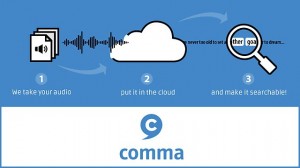Could a Little Startup Called Diffbot Be the Next Google?
From the post:
…
Diffbot founder and CEO Mike Tung started the company in 2009 to fix a problem: there was no easy, automated way for computers to understand the structure of a Web page. A human looking at a product page on an e-commerce site, or at the front page of a newspaper site, knows right away which part is the headline or the product name, which part is the body text, which parts are comments or reviews, and so forth.But a Web-crawler program looking at the same page doesn’t know any of those things, since these elements aren’t described as such in the actual HTML code. Making human-readable Web pages more accessible to software would require, as a first step, a consistent labeling system. But the only such system to be seriously proposed, Tim Berners-Lee’s Semantic Web, has long floundered for lack of manpower and industry cooperation. It would take a lot of people to do all the needed markup, and developers around the world would have to adhere to the Resource Description Framework prescribed by the World Wide Web Consortium.
Tung’s big conceptual leap was to dispense with all that and attack the labeling problem using computer vision and machine learning algorithms—techniques originally developed to help computers make sense of edges, shapes, colors, and spatial relationships in the real world. Diffbot runs virtual browsers in the cloud that can go to a given URL; suck in the page’s HTML, scripts, and style sheets; and render it just as it would be shown on a desktop monitor or a smartphone screen. Then edge-detection algorithms and computer-vision routines go to work, outlining and measuring each element on the page.
Using machine-learning techniques, this geometric data can then be compared to frameworks or “ontologies”—patterns distilled from training data, usually by humans who have spent time drawing rectangles on Web pages, painstakingly teaching the software what a headline looks like, what an image looks like, what a price looks like, and so on. The end result is a marked-up summary of a page’s important parts, built without recourse to any Semantic Web standards.
The irony here, of course, is that much of the information destined for publication on the Web starts out quite structured. The WordPress content-management system behind Xconomy’s site, for example, is built around a database that knows exactly which parts of this article should be presented as the headline, which parts should look like body text, and (crucially, to me) which part is my byline. But these elements get slotted into a layout designed for human readability—not for parsing by machines. Given that every content management system is different and that every site has its own distinctive tags and styles, it’s hard for software to reconstruct content types consistently based on the HTML alone.
…
There are several themes here that are relevant to topic maps.
First, it is true that most data starts with some structure, styles if you will, before it is presented for user consumption. Imagine an authoring application that automatically and unknown to its user, metadata that can then provide semantics for its data.
Second, the recognition of structure approach being used by Diffbot is promising in the large but should also be promising in the small as well. Local documents of a particular type are unlikely to have the variance of documents across the web. Meaning that with far less effort, you can build recognition systems that can empower more powerful searching of local document repositories.
Third, and perhaps most importantly, while the results may not be 100% accurate, the question for any such project should be how much accuracy is required? If I am mining social commentary blogs, a 5% error rate on recognition of speakers might be acceptable, because for popular threads or speakers, those errors are going to be quickly corrected. Unpopular threads or authors never followed, does that come under no harm/no foul?
Highly recommended for reading/emulation.
